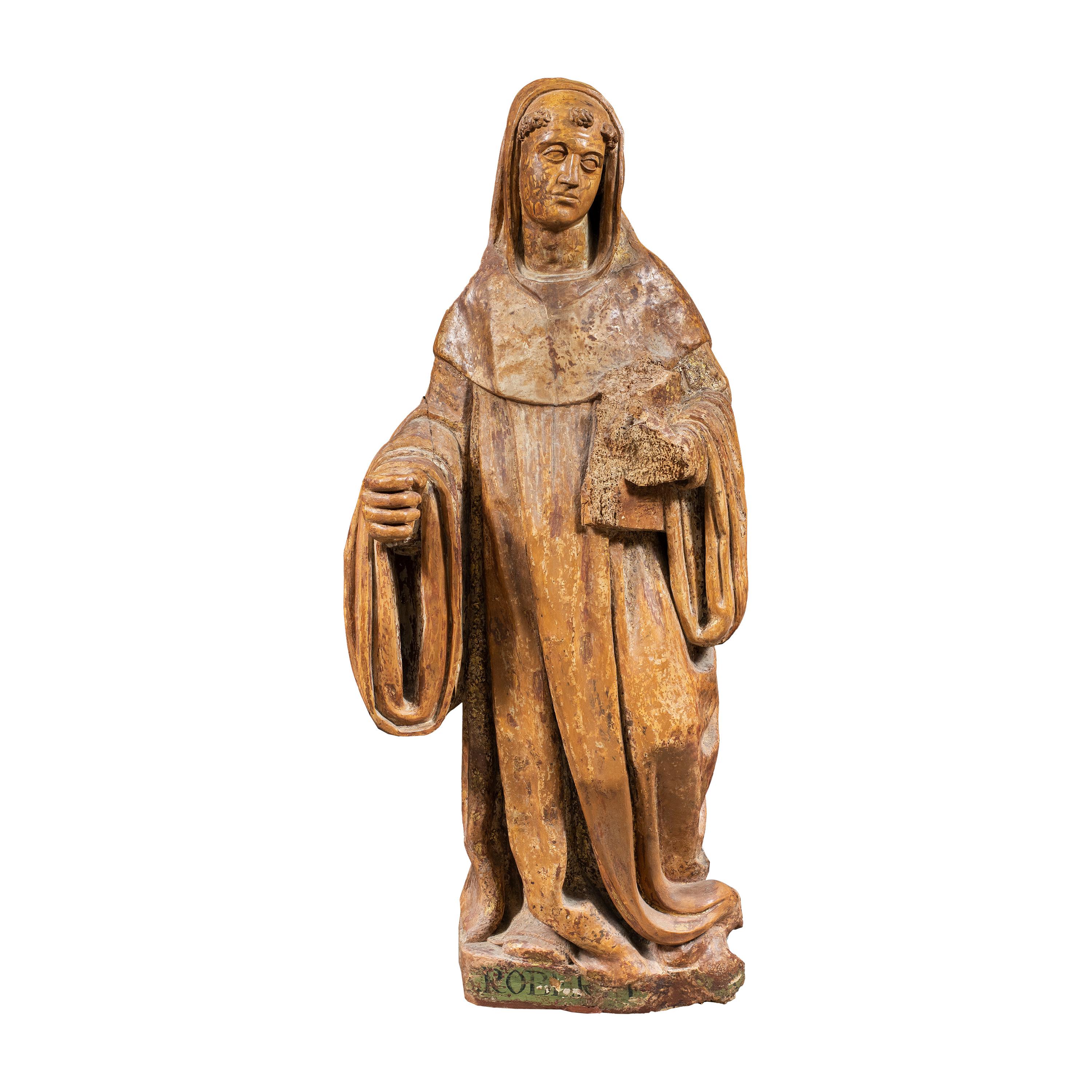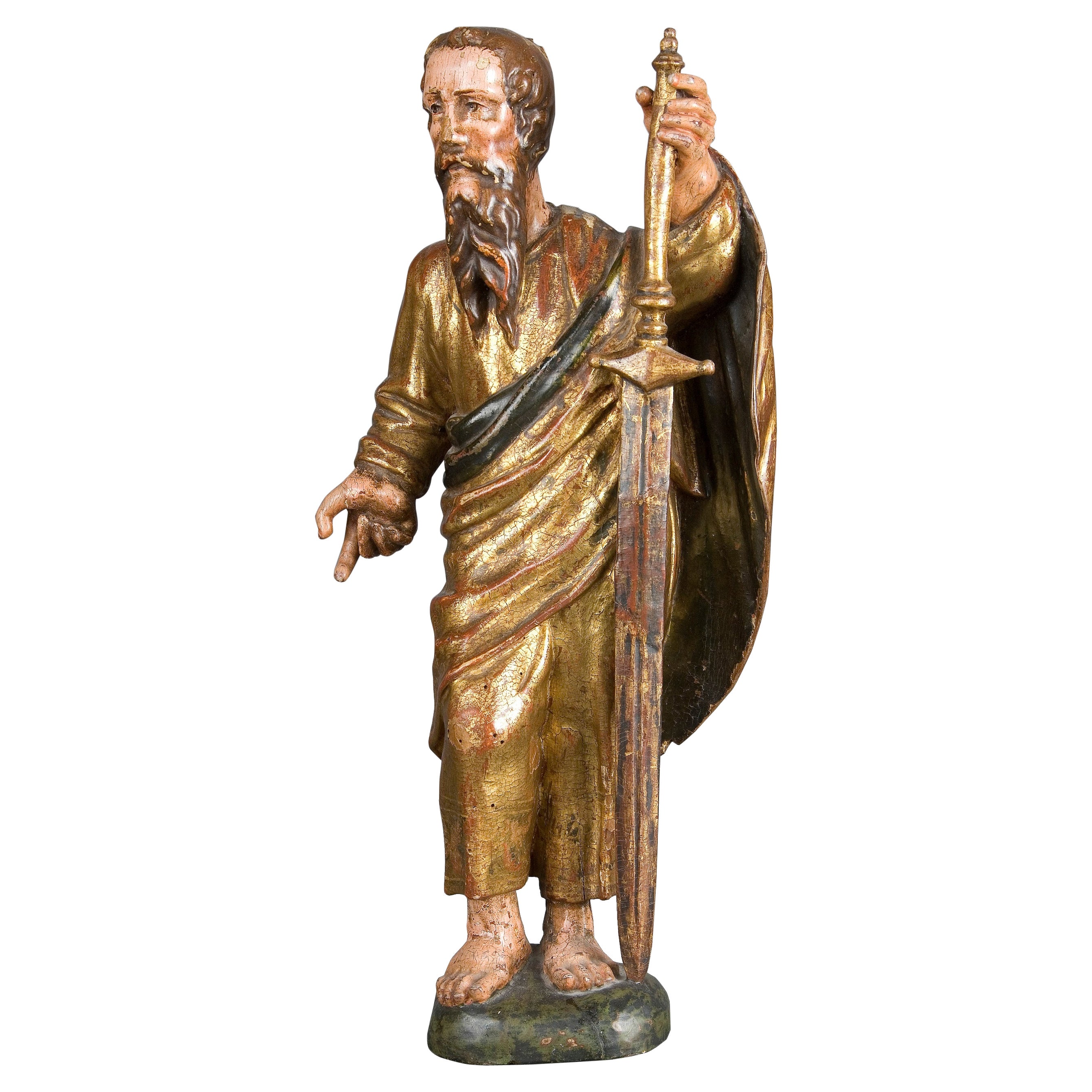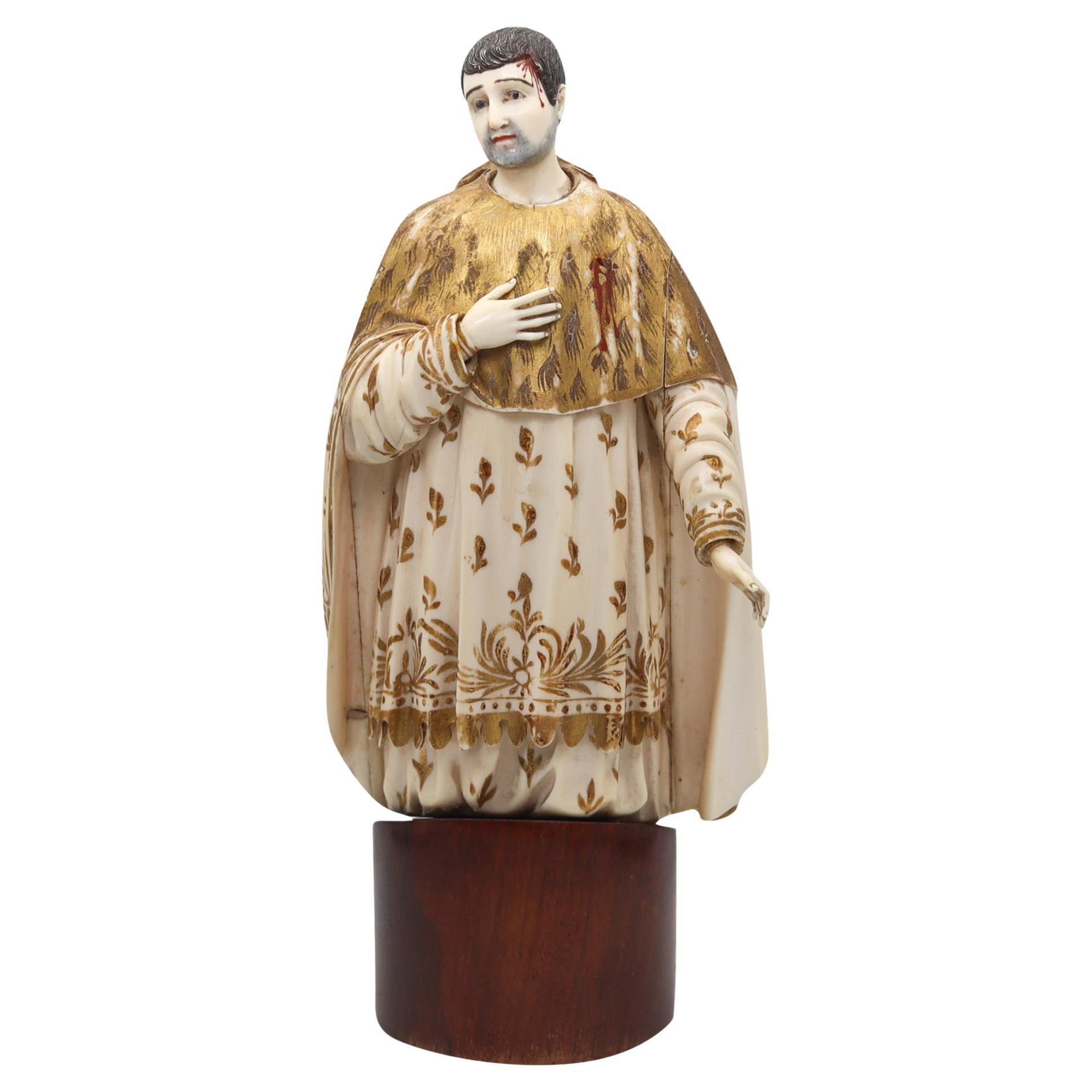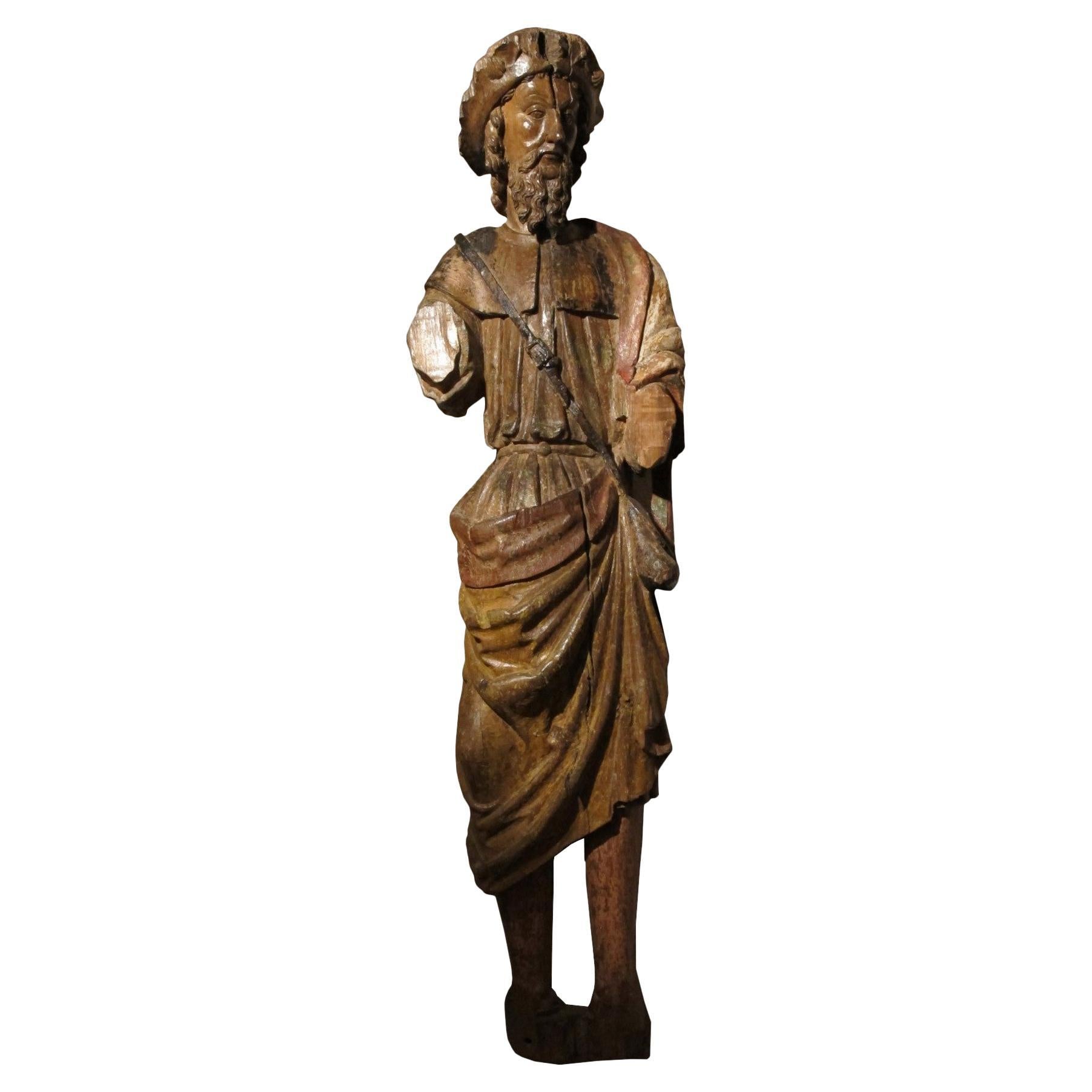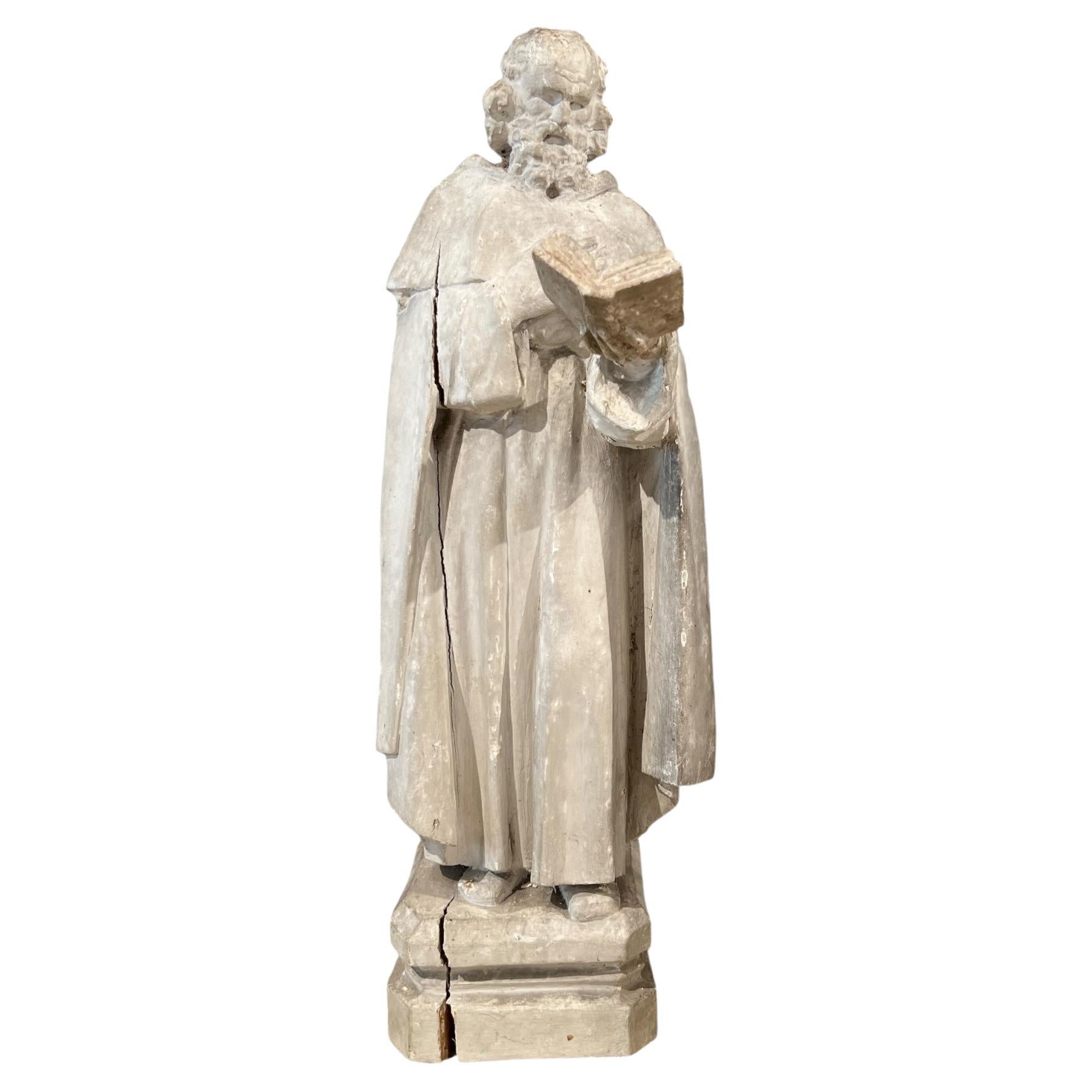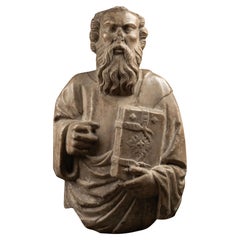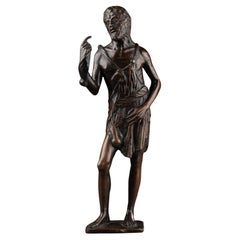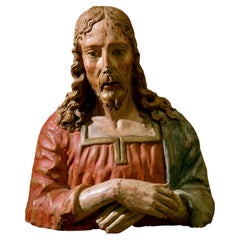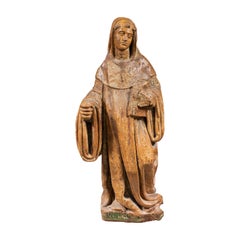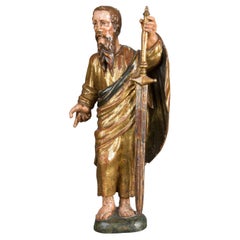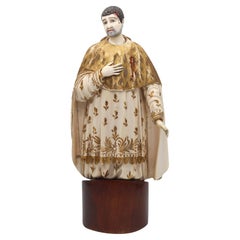Items Similar to Fra Mattia Della Robbia, Saint Joseph, Tuscany, Around 1505-1510
Want more images or videos?
Request additional images or videos from the seller
1 of 5
Fra Mattia Della Robbia, Saint Joseph, Tuscany, Around 1505-1510
$40,705.66
£30,203.80
€34,000
CA$56,851.56
A$61,656.86
CHF 32,384.53
MX$748,931.20
NOK 405,241.11
SEK 381,557.14
DKK 258,910.17
About the Item
Fra Mattia Della Robbia (Firenze 1468-1534)
Saint Joseph
Terracotta
Tuscany, around 1505-1510
55 x 40 x 30 cm
Marco della Robbia the Younger (April 6, 1468 in Florence - 1534) dit Fra 'Mattia Della Robbia is an Italian monk and sculptor member of the Italian artist family Della Robbia, one of Andrea's five sons.
Modeled in terracotta, a medium that allows for greater realism compared to the abstract preciousness of enamelled ceramics, this sculpture is representative of the rich production of "presepi" which reached its peak in Florence between the end of the 15th century and the beginning of of the 16th century.
A sculpture of Saint Joseph comparable to this one was made for the Spedale degli Innocenti in Florence, a 15th century building by Brunelleschi, today on display at the eponymous museum. The presepi of Fra Ambrogio and Fra Mattia are, like our Saint Joseph, made of cold-painted terracotta.
The subjects made for official commissions were often reiterated for private commissions, eager to compete with the city's most important aristocratic families by offering themselves the works of the most prestigious artists of their time as a means of social distinction.
This sculpture of Saint Joseph was probably part of a complete crib realized by Fra Mattia della Robbia and the workshop and inspired by the famous model still preserved at the Ospedale degli Innocenti.
- Attributed to:Della Robbia (Artist)
- Dimensions:Height: 21.66 in (55 cm)Width: 15.75 in (40 cm)Depth: 14.57 in (37 cm)
- Style:Renaissance (Of the Period)
- Materials and Techniques:
- Place of Origin:
- Period:
- Date of Manufacture:1510
- Condition:Minor losses. One hand is missing.
- Seller Location:Bruxelles, BE
- Reference Number:1stDibs: LU6666233714812
About the Seller
5.0
Vetted Professional Seller
Every seller passes strict standards for authenticity and reliability
1stDibs seller since 2022
15 sales on 1stDibs
Typical response time: <1 hour
- ShippingRetrieving quote...Shipping from: Bruxelles, Belgium
- Return Policy
Authenticity Guarantee
In the unlikely event there’s an issue with an item’s authenticity, contact us within 1 year for a full refund. DetailsMoney-Back Guarantee
If your item is not as described, is damaged in transit, or does not arrive, contact us within 7 days for a full refund. Details24-Hour Cancellation
You have a 24-hour grace period in which to reconsider your purchase, with no questions asked.Vetted Professional Sellers
Our world-class sellers must adhere to strict standards for service and quality, maintaining the integrity of our listings.Price-Match Guarantee
If you find that a seller listed the same item for a lower price elsewhere, we’ll match it.Trusted Global Delivery
Our best-in-class carrier network provides specialized shipping options worldwide, including custom delivery.More From This Seller
View AllCircle of Pierpaolo and Jacobello Dalle Masegne (Venice, late 14th century)
Located in Bruxelles, BE
Circle of Pierpaolo and Jacobello Dalle Masegne (Venice, late 14th century)
San Bartolomeo
high relief 'en applique'
white marble
52 x 30 x 14 cm
Provenance :
Collection South of...
Category
Antique 15th Century and Earlier Italian Gothic Figurative Sculptures
Materials
Marble
Saint John the Baptist
- After a model by Bertoldo di Giovanni
Located in Bruxelles, BE
Saint John the Baptist
Bronze
After a model by Bertoldo di Giovanni (ca. 1440–1491)
Northern Italy, 18th century
27,5 x 8 x 5 cm
This finely cast and patinated bronze statuette ...
Category
Antique Late 18th Century Italian Renaissance Figurative Sculptures
Materials
Bronze
Agnolo di Polo Firenze 1470 - Arezzo 1528' - Saint Nicholas of Tolentino
Located in Bruxelles, BE
Agnolo di Polo (Firenze 1470 - Arezzo 1528)
Saint Nicholas of Tolentino
Around 1510-1520
Painted and gilded terracotta
55.5 x 24 x 16.5 cm
San Nicholas de Tolentino is represe...
Category
Antique 16th Century Italian Renaissance Figurative Sculptures
Materials
Terracotta
$15,324 Sale Price
20% Off
Terracotta Bust of Christ as the Redeemer, 15th Century
Located in Bruxelles, BE
A terracotta bust of Christ as The Redeemer
Tuscany or Emilia Romagna, late 15th century
Measures: 46 x 43 x 21 cm
This powerful, moving bust of...
Category
Antique 15th Century and Earlier Italian Renaissance Figurative Sculptures
Materials
Terracotta
Followers of Jean de la Huerta, Jean de Blany ? - Saint Jerome
Located in Bruxelles, BE
Followers of Jean de la Huerta, Jean de Blany ?
Saint Jerome
Limestone
Burgundy, second half of the15th century
60,5 cm
ALR Ref : S00248050
This exquisite sculpture of Saint Jerome, carved from soft, nearly white limestone typical of eastern France, exemplifies the exceptional craftsmanship of 15th-century Burgundian art. The figure of Saint Jerome, a key figure in Christian history renowned for translating the Bible into Latin, is depicted wearing a cardinal’s hat and holding the Vulgate Bible...
Category
Antique 15th Century and Earlier French Renaissance Figurative Sculptures
Materials
Limestone
Large Terracotta Relief - Lombardy, First Half of 17th Century
Located in Bruxelles, BE
Large Terracotta relief of the flight into Egypt
Lombardy, first half of 17th century
Painted terracotta
91 x 85 x 11,5 cm
This event in the early life of Christ is recounted i...
Category
Antique 17th Century Italian Baroque Figurative Sculptures
Materials
Terracotta
$62,255 Sale Price
20% Off
You May Also Like
18th C Wooden Sculpture of Francis of Paola
Located in Leuven , BE
Francis of Paola, O.M., (or: Francesco di Paola or Francis the Fire Handler; 27 March 1416 – 2 April 1507) was an Italian mendicant friar and the founder of the Roman Catholic Order ...
Category
Antique 18th Century European Figurative Sculptures
Materials
Wood
Renaissance Italian sculptor - 16th century carved wood sculpture - Saint Robert
Located in Varmo, IT
Carved wooden sculpture - Saint Robert. Italy, 16th century.
54 x 30 x h 112 cm.
Entirely carved and painted wood with traces of polychrome and gilding.
- Inscribed on the base: "...
Category
16th Century Renaissance Figurative Sculptures
Materials
Wood
$3,591 Sale Price
25% Off
Saint Paul, Carved and Polychromed Wood. Spanish School, 16th Century
Located in Madrid, ES
Spanish school of the sixteenth century. "Saint Paul". Carved and polychrome wood.
Devotional image of a round piece carved in wood, polychrome and gilded, representing the Apostle ...
Category
Antique 16th Century Spanish Renaissance Religious Items
Materials
Other
Italy 18th Century Lombard Carved & Polychromate Sculpture of St Peter of Verona
By Veronese
Located in Miami, FL
An Italian 18th century sculpture of St. Peter of Verona.
A magnificent sculpture of St Peter martyr of Verona, created by a member of the Lombard art school in Verona Italy, in the...
Category
Antique Early 18th Century Italian Baroque Figurative Sculptures
Materials
Gold Leaf
15th Century Carved Wood Depicting Saint James
Located in Saint-Ouen, FR
The Saint depicted here is Saint James the Great.
James is the brother of St. John the Evangelist. Nothing is known of his activities after the Ascension...
Category
Antique 15th Century and Earlier French Gothic Figurative Sculptures
Materials
Oak
19th Century Italian Hand-Carved Wood Statue
Located in New Orleans, LA
A soulful hand-carved wood statue depicting a saint in quiet contemplation, reading the Bible—rich in devotional detail and aged patina, embodying spiritual reverence and masterful c...
Category
Antique 19th Century Italian Figurative Sculptures
Materials
Wood
More Ways To Browse
Used Cribs
Italian Della Robbia
Terracotta Saint
Art Nouveau Lady Gold
Bronze Sculpture Maiden
Carved Driftwood Sculpture
Carved Sphinx
Erotic Objects
Eve Sculpture
Glass Sculpture Nude
Hand Carved Wooden Figurines
Jean Baptiste Carpeaux
Large Roman Sculpture
Life Size Marble Sculpture
Marble Sculpture Plinth
Nike Goddess
Philippines Carved Wood
Red Statues

